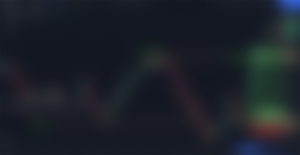How To Learn Crypto Trading – A Complete Beginners Guide
If you’re a crypto noob wondering how does trading work and how can you make money from it, you might want to start with the basics. In this article, I will look into how to learn crypto trading from a beginner’s perspective. I'll start with the most fundamentals notions about trading, will cover where and how to trade, and will also list some of the best trading books and tools that can help you get started.
First, a short disclaimer: cryptocurrency trading is not for everyone. It involves risks that, if not managed properly, can get you to lose your money very fast. You have to know your risk tolerance before starting with crypto trading. Also, always DYOR and never trade with an amount that would hurt you financially in case you lose it.
Are you still here?

How to learn crypto trading as a beginner
Learn all you can about Technical Analysis
In order to not fail from the beginning as a crypto trader, you need to know at least some of the basics of Technical Analysis (TA). Start by learning what are the basic candlestick patterns, what is an order, what are support and resistance levels, what does volume represents, what are the basic technical indicators, and which are the most reliable price patterns.
There are two books that helped me the most in understanding how markets move and how Technical Analysis can be used in trading cryptocurrency:
I highly recommend reading at least one of these before you embark on a trading journey. It will provide you with a very solid foundation on technical indicators, orders, chart patterns, volume movements, and market psychology. Even though the examples in the books are based mainly on stock market prices, they can be easily understood and applied in cryptocurrency trading as well.
Determine what type of trader do you want to be
Once you have gone through the basics of trading and Technical Analysis, the next thing for you to do is to honestly answer these questions:
How much time can you allocate for trading?
Are you a patient person or the opposite?
Would you prefer to take several trades with smaller gains or would you want to trade less often but for bigger returns?
The answers are very important and will give you a good indication of which time frames are the most suitable for you.
For example, if you’re more of an impatient person who prefers to “win” often and you have more than 4 hours per day to trade, you might want to trade 5m, 15m, 30m, or 1h price charts. Since these time frames can allow taking more trades in a day, this concept is referred to as day trading. Otherwise, for more patient persons, swing trading might be the preferred method, meaning they will look to trade 2h, 4h, daily, or even weekly charts.
Both day trading and swing trading can make you money. Also, they both have their own pros and cons:
Day trading – can be viewed as more rewarding since you get more often chances of a “dopamine rush” associated with a winning trade. In terms of cash earnings, though, the rewards are usually smaller compared to the ones from longer-term swing trading. Also, since more trades are made, the cost of fees adds up fast and can reduce your profits. Requires staring at a monitor all day, or at least while a trade is open.
Swing trading – has the advantage of catching a bigger price move, especially in a trending market, and therefore brings higher profits. It can also offer peace of mind (if stop losses are in place), allowing you to focus on other things besides looking at the price chart all day. Swing trading requires a lot of patience and discipline.
Choosing the right trading method between these two should be based only on your preferences and personality.
Setup a TradingView account and do some paper trading
Before creating an exchange account and depositing any real money, take a few days and practice trading on paper. What does that mean? Well, as the name suggests, it means writing down on a piece of paper trade simulations as a testing method for your trading and TA skills. "But how can I learn to trade crypto on paper?" you might ask. The great advantage of this method is that you can learn the basics of trading without losing money. The more such simulations, the better overview you will get.
TradingView is the best charting software you can get. You can create a free account and chart all possible crypto pairs. You can also use it to set price alerts and create watchlists of your favorite charts.
Once you have your account, take the time to familiarize yourself with the TradingView interface and tools. Open the chart of your favorite cryptocurrency by searching for the ticker (BTCUSDT, ETHEUR, ADABTC, etc.) then, based on what you learned from the TA books mentioned above or from Investopedia, draw the trend lines, closest support and resistance levels, and price patterns that are most obvious to you.
Based on the time frame selected, do you see any good entry opportunity on this chart? If no, just move on to other cryptocurrency pairs until you find something that you would trade.
Write down the entry price, the number of coins you would buy, the stop-loss and take-profit levels, the total trade amount (entry price multiplied by the number of coins), and the profit or loss resulted from that trade. Alternatively, you can use a spreadsheet to log your trades.
Based on this simple template, write down and track as many real-time trades as possible. Mark the trades you lost and write down your comments. After a few days, or when you have enough closed paper trades, calculate your total profit or loss. Are you happy with the outcome? If no, try to find out what went wrong and what you could adjust to turn a profit. Could be that your stop loss is too tight or that your take-profit is too far away from your entry. Or several other possible reasons. Try to identify and correct these. Retest with a new set of simulations until you see constant profits from your trades.
Paper trading was the first thing I did before buying my first crypto back in 2016. To this day, I am very grateful I did, because otherwise, I would have probably lost more than half of my initial account with an untested “trading strategy” I had.
Starting out with a real account
Paper trading is only the first step on how to learn to trade crypto, but you cannot call yourself a trader without actual “skin in the game”. Once you are confident enough from paper trading simulations, you can go to the next step and trade using real money.
Before you start, keep in mind the most important goals as a trader: you need to do all your best to first protect your capital, and then multiply it.

Register on a crypto exchange
First of all, you will need to choose a crypto exchange. I would recommend starting out with either Binance or Kucoin, since they have some of the lowest fees. Once you have created your account, it is up to you if you want to go through the identity verification process (KYC). Most exchanges require KYC for larger same-day withdrawals or deposits.
Account size and initial deposit
The trading account or trading capital represents the total amount of cash you have available for trading. Depending on how much you afford to allocate, you can start out with a smaller ($1000 or less), a medium-sized ($1000 to $10k), or a larger account (more than $10k). Regardless of your initial account size, here are some tips to have in mind:
Don’t borrow money to trade with – as a beginner, this can never be a good idea.
Build your initial capital either from extra savings from salary or income
Your account size should be big enough to hurt in case you lose it all, but not to ruin your life.
The next step is to transfer your funds into your crypto trading account. Most exchanges, including Binance and Kucoin, offer the possibility of depositing cash via a bank transfer or by using a credit or debit card.
Usually, bank transfers are the cheaper but more time-consuming way to deposit, while card deposits are instant but with additional fees.
Whatever method you chose, I would recommend starting with a smaller test deposit first, like $20 or $50, to verify that everything goes smoothly and that your bank has no restrictions for cryptocurrency transactions.
Which coins to trade
Once your deposit arrived and your trading account is funded, you can choose what cryptocurrency pairs will you trade. On Binance, you have the option of trading Bitcoin or altcoins against stablecoins such as USDT, BUSD, or DAI. If you’ve deposited Euro or GBP, you will first have to convert your balance into one of these stablecoins.
Besides stablecoins, you also have the possibility of trading altcoins against BTC, ETH, or BSC. For example, if you want to enter a long position the ADA/BTC spot pair, you will first have to buy BTC with (part of) your cash balance, then buy ADA with that BTC.
If you want to short sell ADA, you cannot do so on a spot market, and you’ll have to use Isolated or Cross Margin options. This means you will have to use either cash or BTC as collateral in order to borrow ADA, which is sold once the order is placed.
You can find more details on how spot trading and margin trading works on Binance in their FAQ section.
Finding good entries
When looking for new trade opportunities, take the time to scout as many charts as possible. Keep a watchlist with the coins that have a chart that presents interest to you.
As a beginner, try to look mainly after simple patterns and indicators, such as support and resistance levels or moving averages. Often these are the most reliable, especially on longer time frame charts.
One other hint: most cryptocurrencies have prices correlated, meaning there they have similar-looking charts. You can use that to your advantage, by looking for coins that already had a strong rally and then find other coins forming a similar price pattern.
Create a basic plan before each trade and follow it thoroughly. Besides the entry price, your trade plan should have also the predetermined stop-loss price and the take-profit price/prices. You can use a single take-profit order or you can set multiple sequential orders.

Proper risk management
Risk management in trading is a vast subject and will be covered in a future article. I will mention here what I consider to be the two most important ways to manage risk:
1. Never risk more than 2% on a single trade. This will protect your capital in case the price doesn’t go in your favor. Professional traders use an even lower figure, between 0.5 and 1.5%, but you can start with a max 2% risk per trade.
What does this mean? Let’s say your trading account size is $10.000 and you want to buy a coin that is trading at $100. If you use your entire balance on this trade, you will be able to buy $10.000 / $100 per coin = 100 coins. Based on the 2% rule, your stop-loss order should be placed above $98. This is the maximum amount of money you stand to lose, including the trading fees. If the price of your coin drops suddenly to -15% or -20% and your stop-loss is hit, you will lose a maximum of $200 and not more.
2. Use a stop-loss order for every trade. There should be absolutely no exceptions here. Unless you make a habit of calculating and placing a stop-loss order for every trade you enter, not only do you risk losing your capital really fast, but your trading will suffer in the long term.
Here’s an example of how and where to place your stop-loss and take-profit orders, based on support and resistance levels:

If you enter a long trade above a key support level, your stop would be best placed slightly below that level. In this example based on an ETHBTC trade, I set a stop-loss slightly below the support level from 0.0583 BTC. After waiting for the price to clearly retest and bounce off this level, I took a long trade at 0.059. Right after my entry order was filled, I placed my stop at 0.058. In case the stop-loss order would have been hit, my loss would have been only 1.69%. In this case, Mr. Market decided to pump, and hit my only take profit order, placed slightly below the resistance level at 0.064.
You can use the long/short position measurement tools from TradingView to calculate where your stop-loss and take-profit orders will be placed.
There’s a reason why experienced traders on social media always say to “cut your losses short”. In trading, if you don’t learn how to do that every time, you’re simply not going to make it.
Trading vs investing
This might sound like a surprise to some, but trading and investing in crypto are not the same thing. While investing in a project you believe in requires “locking” your investment money for a longer term (usually years), trading is more fluid in nature and requires you to keep your capital available to take advantage of the next opportunity.
You trade because you want to make money and not to be a “hodler” or a community member for one cryptocurrency or another. Trading implies changing your opinion in case the market proves you were wrong in the first place. This is why it is critical to use risk management techniques like stop-loss orders – as a trader, you have to protect your capital from major losses. In crypto, such losses can happen overnight or within those few minutes when you were not in front of your screen.

Leverage
Leverage can be a great tool, especially used at the right moment and with proper risk management. It requires a lot of practice and trading experience. This is why, as a crypto noob, you would be better off trading spot markets. Leverage is a great way to maximize your profits, but at the same time, it has the potential of maximizing your losses (or even wipe out your entire account). My recommendation would be to first make at least a few hundred spot trades before you look into leverage trading.
Final trading tips and recommendations
Here’s a list of things I learned the hard way as a crypto trader - hopefully, they will inspire you not to make the same mistakes I did at the start of my crypto quest:
Take your time to chart and plan each trade before placing any orders – the plan should contain your entry price, how much capital you’ll allocate for that trade, invalidation level, and one or more take-profit prices.
Cut losses short and move on to the next trade – there’s always going to be another opportunity if manage to not lose your trading capital.
Trade a lot – you cannot learn from other people’s experiences. Trading is a skill like any other, it needs a lot of practice to master.
Don’t stick to a fixed opinion - change your mind as the market changes. You want to make money, not be right all the time.
Protect your main capital at all costs – learn to survive by using risk management to your advantage. Slowly but surely, your hard work and discipline will bring profits.
If you found this guide helpful and would like to buy me a coffee, you can do so here.
Also, you might be interested in:





Very good information here. Not sure if trading is for me, since even having been in the stock market for 30+ years, I have never really been a trader, but an investor. I do see the crypto area to be a bit different and so maybe one day I might give it a go. This article at least provides a nice foundation from which to help me along in what I decide to do going forward.